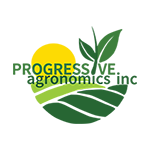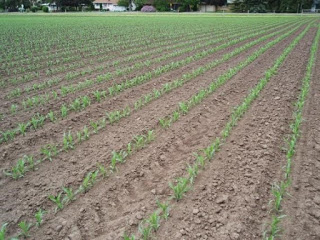Every year we prepare a plan for the growing season, and every year Mother Nature throws us a curveball! Many of Beck’s Practical Farm Research (PFR)® studies focus on helping you develop your plan for the year utilizing different studies and practices. The PFR Proven™ designation has helped us narrow down the activities that increase profit and set direction.
Many of us have been faced with situations that did not go as planned and asked ourselves, “What should I do now to maximize this crop?” In PFR, we have started looking at in-season decisions based on the unexpected situations we experience throughout the growing season. In 2020, we were able to evaluate a few different scenarios and take an agronomic approach to learn about the best options.
In a situation where we decide not to replant, or if it is too late to replant, what should you consider changing with your nitrogen (N) or fungicide in-season plans? Do we cut the rate of N, because that stand is lower? Or, do we stay the course with N rates and maximize yield potential? Beck’s PFR data from one year of studies shows that we should keep N levels the same until we get near a final corn stand of 20,000 plants/A. This will vary based on the corn hybrid you planted. In the two-hybrid study we conducted across multiple locations, we saw a larger yield advantage with genetics that have a high N response, and a modest yield increase from N efficient hybrids.
When making fungicide applications on a thin stand, it’s important to first think about why you are planning to apply a fungicide. If you are scouting and applying a fungicide when thresholds for diseases are met, then continue to scout and make the application. If disease pressure becomes yield-limiting, you want to maximize the plants already in the field. If you are planning an application to maximize yield potential or reach high yield goals, that shouldn’t change just because you have a thin stand. How much can you increase the yield potential of the plants still out in the field? One year of PFR data shows that you can increase profitability by applying fungicide on lower finals stands.
In PFR, we have created a way to simulate a hail storm to evaluate the impact of early-season damage. We looked at applying fungicide and foliar nutrition to help mitigate the effects of hail damage. In 2020, we saw very little foliar disease pressure after the hail event. Hail damaged leaves have limited surface area, so we need to protect what is left after a hail storm. The addition of a foliar fungicide and foliar nutrition seemed to help the plants recover and even thrive in some instances. This is also a new study that we plan to expand on in 2021.
In 2020, PFR also looked at frost damaged corn at different growth stages. The team simulated frost on V2 and V4 corn and compared yields to no frost, frost damage, replanting, and frost damage plus mowing the frosted leaves off. Overall, the data backed up what we have always believed; corn can handle frost when the growing point is below ground. It was not profitable to replant, and it was not profitable to mow the frosted corn. Look for this study at more locations this year.
The biggest in-season decision everyone seems to face in their careers is replanting! We decided to face this head-on and learn about the thresholds for replanting. Have our threshold levels changed with new corn and soybean genetics? In our multilocation PFR studies, we found that when corn is planted early, we can improve profitability by keeping stands into the mid to low 20,000 plants/A. This does depend on some hybrid characteristics, but this study was completed with a more determinate early style corn and a flex ear corn.
Soybeans are often more difficult to determine when replant is warranted. Many times we struggle to understand how well a soybean plant can branch and compensate for a poor stand. In Figure 5, you can see how well the soybean plants adjust and branch, thus creating more nodes per plant.
We also know through PFR studies that earlier planting, even at lower populations, will increase yield potential. Scouting and knowing what soybeans will survive is key to making a good decision. In our PFR studies, we have seen that earlier planting is better than replanting down to populations lower than originally expected.
We are expanding our replant studies in the future to look at spotting in and determining the correct population to leave the original stand for both corn and soybeans.
~ Steve Gauck, CCA – Regional Agronomy Manager

